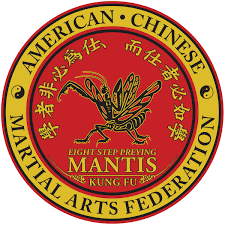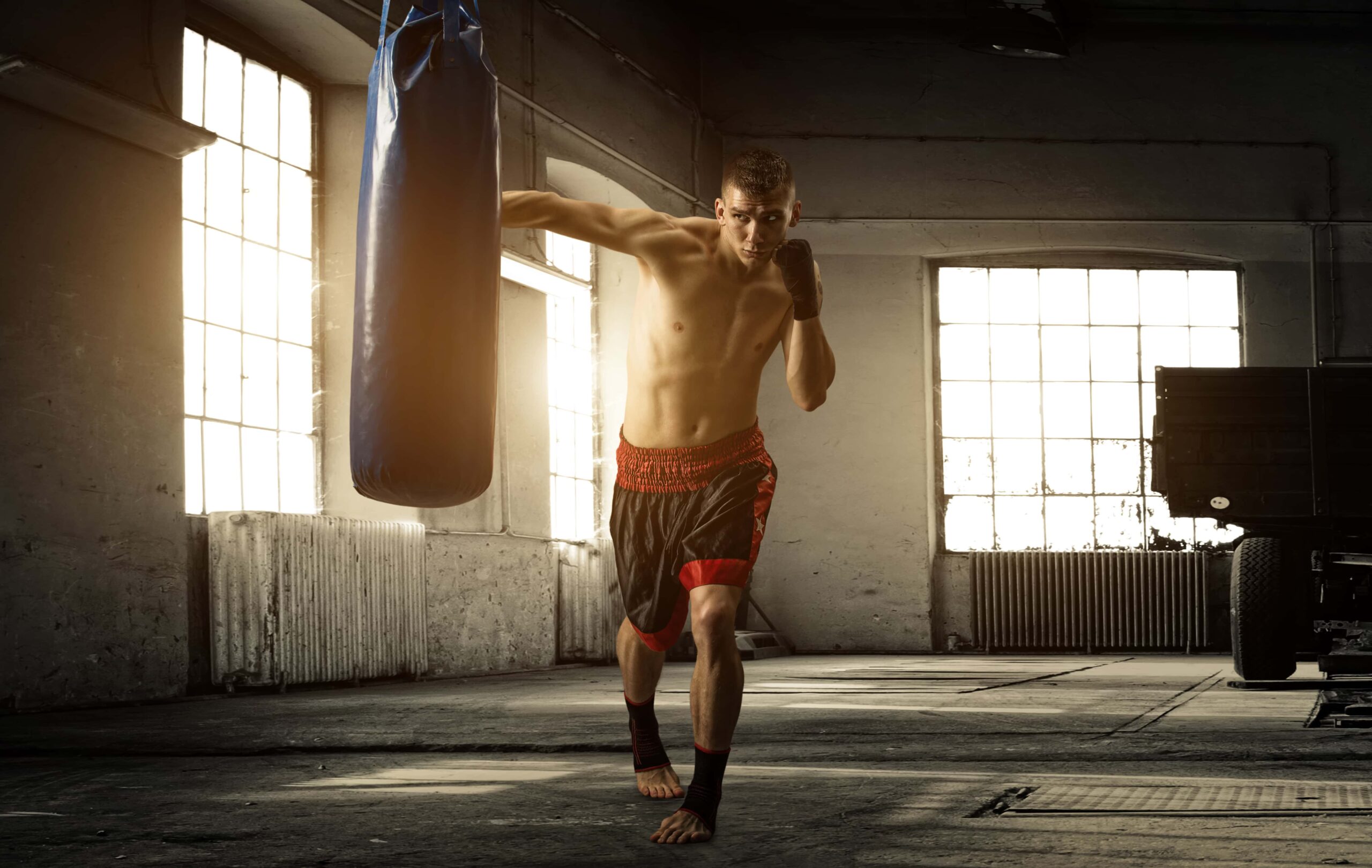Combat Arts training will vary greatly from style to style, and even within a style, depending on training approach and focus. The martial artist who is training to be a MMA and UFC fighter trains differently than the traditional martial artist who wants to increase and maximize their workout. However, traditional martial artists and professional fighters both are all looking to maximize power, strength, endurance, and fast twitch muscle response.
Achieving Peak Performance in Combat Arts Strength and Conditioning interestingly is explained by physics formulas that outlines much of what happens during martial arts training.
It doesn’t even matter where someone is at when they start training, whether older students relatively new to martial arts, younger students just starting out, or those who are athletes in other types of sports, martial arts training improves power, endurance, strength, and capacity.

Ronda Rousey
UFC Legend
“I always think to myself, If I ran into them in a parking lot and they slapped my little sister, would I be able to beat the hell out of them? And the answer is always - Yes, I would.”
This thought is not surprising coming from recent UFC Hall of Famer, Ronda “Rowdy” Rousey. Rousey is the first female UFC Hall of Fame induction in the history of the sport. Rowdy Rousey has incredible power, strength, speed, endurance, explosive power, and has been called a “game changer” since she first burst onto the fighting scene.
Research has shown that martial arts training improved all fitness levels of practitioners, including middle aged and older practitioners. In almost every test, martial artists outperformed non martial artists by nearly double, including sit ups, push-ups, endurance, strength, flexibility, total capacity, balance, body fat/muscle composition, etc.
The physiological demands and movement patterns within the specific martial arts styles vary, and designing a training program that takes these variations into account will create a suitable conditioning program. It also matters whether talking about internal or external martial arts, as the approach and focus may be quite different, even though the result, that of taking down an opponent, remains the same.
Different martial arts styles require different strengths. Certain types of martial arts are a complete fitness system, addressing all muscles, while other types have more specific applications.

For instance, 8 Step Mantis Kung Fu is a complete training program that will increase anaerobic and aerobic capacity, increase strength, optimize power and explosive power, strengthen core, and greatly increase endurance.
Deep core strength is required for grappling and explosive kicks, while powerful directional changes require strength and speed in lateral movements.
Jeet Kune Do is also a complete training system, as are karate, wing chun, and certain others. They all create peak physical condition in practitioners, and deliver a total attack and defense system that includes kicks, strikes, throws, joint locks, and grappling.
Studies have shown that other forms of martial arts have more restricted requirements that do not include all types of attack modes. For instance, Brazilian jiu jitsu focuses more heavily on ground fighting and grappling, requiring powerful core strength. Tae Kwon Do requires high functional flexibility and explosive power, which are more important in this style of fighting than maximal strength.
This sport significantly increases anaerobic power and anaerobic capacity by 28 percent and 61.5 percent, respectively, but does not increase aerobic power. Judo has similar requirements to Tae Kwon Do at the Olympic level, but the contests in judo last longer, increasing the need for extreme aerobic training and ability, as well.
What are the Components of Physical Power?
Every combat athlete understands the key components of fitness for Combat Arts success is the winning formula. It is power that makes that snap kick to the face, striking punch to the gut, and high head kick impact the opponent like a sledgehammer. It is power that makes your undercut snap a head around, and power that elicits that satisfying grunt from the opponent after your front knee strike.
Explosive Power
Is what rocks the martial artist’s world. Explosive power, combined with speed and accuracy, are primary for winning on the mats or in the Octagon.
Repetitive Explosive Power
Do it once—but can you do it again? The elbow following up the knee strike with an uppercut…repetition of explosive power is paramount to massively stomping the opponent. Slam them once, they’ll get up, twice—maybe, but hit’em jackhammer style, and they are staying down.
Sustainable Power
Endurance. And that’s not easy. It looks simple, fast and fun when UFC Bantamweight fighter Jessica “Evil” Eye lays them out with her intense, in your face, take-no-prisoners style of fighting and attack, but pouring out full tilt energy, repetitive explosive powerful strikes, and grappling takes immense endurance.
Muscle Endurance
Is the ability of a muscle group to execute contractions over a period of time sufficient to cause muscular fatigue. It’s that type of muscular endurance that separates the true fighters from the players. You got it—you’re good. You don’t—you can train for it and get it. But you’ve got to have it. Running out of gas mid-fight just leaves your opponent with a smile.
What is Endurance Capacity?
There is strength, endurance, power, and then there is capacity, or how much of it all you’ve really got to call on. Capacity shows the total amount of ability and force. Fighters with high muscular strength, extreme power, and great repetitive explosive power but low capacity are going to win if they get the drop on their opponents early on. Fighters gifted with all of the above, and deep capacity like a bottomless well, will rise to the top in fighting events, and stay there.
Fedor Emelianenko is one such fighter who immediately comes to mind, described by ESPN as possibly the greatest MMA fighter ever. Emelianenko went from 2001 and 2010 without losing a single bout, which is impressive. He was the top heavyweight in Pride Fighting Championships, dominating almost everything he’s been in.
“Put Demetrious Johnson in a bar, I guarantee you he cleans out that whole bar. And you could put 300-pound guys in there. They’re not gonna make it. That’s how strong and good this guy is.
People should just realize that.”—Bas Rutten, retired heavyweight MMA fighter said of first and the current Flyweight Champion of the Ultimate Fighting Championship combat fighter Demetrious Johnson, who stands 5’3 and weighs in at 126 pounds. Explosive power, speed, strength, and skill make all the difference in a fighter’s ability even when pitted against much larger opponents.

Source: mmafighting.com
Maximum Duration of Top Energy Capacity
The requirements of intensive martial arts training, sparring, and competitions are extremely high.
There is a physical profile that most fighters will end up with after a certain length of time training, irrespective of the shape they were in when they began.
Research has shown that achieving top energy capacity, peak power, extreme accuracy, and the ability to sustain this high level of physical fighting capacity is absolutely required to become a contender and a winner.
Due to the specificity of combat in kickboxing (i.e., high-intensity movements during rounds, with short breaks that are not enough to provide a full recovery), Zabukovec and Tiidus showed that kickboxing requires moderate-to-high levels of aerobic/anaerobic power.
The anaerobic metabolic pathway provides energy for short and intense attacks of maximal power during combat, while the aerobic system contributes to the kickboxers’ ability to repeat attacks at the same strength and speed level during the total duration of the combat, to optimize the recovery process during the brief periods of rest or reduced effort during the combat, and also for effective recovery between consecutive combats.”
Putting it Together - Strength and Power
It’s a fact that combat sports require it all. That’s what makes martial arts so exciting, challenging, and intense; it pushes the physical to the absolute limit. Strength is important, but it’s not enough. If it was, then top weight lifters would mangle martial artists. Strength is essential for grappling and submissions, but power is ultimate; power is what gets you there. In this context, power means that every muscle in your body has been trained to simultaneously act together in delivering the force of a blow.

This is one difference between the master and the student. The student learns the technique and performs it properly. That is strength. The master performs that same technique with every joint, ligament, and muscle exploding into it—that is power. Power, and particularly explosive, repetitive power is the outlet for that strength that lets you wipe the floor with your opponent.
The kung fu or tai chi master uses power to lightly throw a punch that sends the recipient flying many feet. This is the idea behind the one inch punch, where the martial artist punches with fist or finger from one inch away, and breaks the board or sends his opponent sailing through the air. Watch Bruce Lee show his one inch punch here.
Strength and Explosiveness
Power means releasing maximum muscular force at maximum speed, and is a combination of strength and explosiveness. Combining strength with speed gives the momentum created through the speed along with the force generated by muscular effort. So, increasing power means increasing speed and strength, in order to have maximum effect.
Muscle Power
There are over 400 muscles in the human body. They include the smooth muscles that perform automatic functions like digestion and circulation, and the striated muscles that are under conscious control such as muscle groups in back, arms, and legs. Power comes from utilizing these striated muscle groups for controlled action.
You Either Have Slow Or Fast Twitch Muscles
Everyone has a preponderance of either slow twitch or fast twitch muscles. This preponderance of muscle type remains fixed over one’s lifetime, and cannot be changed. It is important to understand which type is primary for your body, how to work with that, and increase the strength of the type most desired for your training purposes.
Most martial artists prefer to have powerful fast twitch muscles as their primary type of muscle since that is important for combat sports.
Slow Twitch Versus Fast Twitch Muscles
The striated muscles have different types of fibers within them that are designed for different purposes. One type of striated muscle fibers is used when the body needs to keep going for long periods of time, such as long distance cycling, running, and long training or fight events.
These are called slow twitch fibers, and have a high capacity for aerobic energy production, allowing them to function for long periods of time while producing only small amounts of waste products like lactic acid. This reduces the amount of fatigue generated by working for long periods of time, and those with a high percentage of slow twitch fibers excel at endurance activities.
The other type of striated muscle fibers is fast twitch muscles. These give speed, power, and quick reaction time, along with a high capacity for anaerobic energy production. Martial artists with a high percentage of fast twitch fibers have incredibly high explosive strength capability, producing intense power, and quick contraction. Fast twitch muscle fibers create high amounts of lactic acid during use, inducing a swift fatigue response.
Optimize Your Fast Twitch Or Slow Twitch Muscles
The percentage of fast twitch to slow twitch muscles is determined early in life and cannot be changed. It is possible to improve the metabolic efficiency of both fast and slow twitch fibers, however, which is great for martial artists. Are you fast out of the corner, a jackhammer throwing blows, powerful in submissions—but run out of gas too early?
Or you can go the distance, outlasting instead of out-striking your opponent, wearing them down until that one solid blow takes them out?
Does class and training wear you out—or wire you up? These types of questions tell you whether your body is fast twitch or slow twitch dominant.
Once you know that, design a training program that increases longevity and endurance through strengthening your slow twitch muscles, or conversely, powers up your fast twitch muscles and super amps your reaction and strike speed. Or increase both types, which is always a good answer.
All fighters have fast and slow twitch muscles interwoven throughout their bodies, but typically with a higher number of fast twitch fibers. Targeted training will increase efficiency of these muscles, giving the martial artist the advantage they need to dominate and win.
Max Explosive Power And Train like a Warrior
Max out your power, amp up your speed, and surprise hell out of the other fighter by striking before they can blink or think. Explosive power is essential for martial artists, moving in fast, striking hard. UFC bantamweight cage fighter, Jessica “Evil” Eye, and Ronda “Rowdy” Rousey, are two top fighters who exemplify this idea.

“Somebody told me once that it’s the pretty fighters you have to watch out for. If someone’s all gnarled and mangled up, obviously they’ve been getting hit a lot.”
Ronda "Rowdy" Rousey // UFC Legend
Peak Training Techniques
Certain training methods are common to all disciplines, while others are highly specific. There are many ways to increase explosive power, repetitive power, and muscular endurance through training.
Many of these techniques can be utilized in a regular gym, home gym, or by adding just a few specialty items into the mix, like kettlebells, a pull up bar, or a heavy, solid box. These training techniques all increase core strength, which is essential for connecting the upper and lower body, and increasing overall power for the fighter.
Kettlebells
These oddly shaped weights have been around since possibly classical Greece, says fitness historian, Victoria Felkar. “Suggestions have been made that in Western civilization, objects resembling kettlebells were used as far back as classical Greece,” she writes in her currently unpublished paper on the topic.
Kettlebells have recently become popular in UFC and MMA because they are simple to use, powerfully effective, develop explosive power, strengthen core, slow and fast twitch muscles, and require only one accessory—the kettlebell.
One caveat is they must be used correctly, since swinging around a heavy weight can also potentially harm joints, ligaments, etc., if not practiced in a very controlled, correct manner. Kettlebell use will strengthen the lower back, glutes, legs, shoulders, grip strength, and strengthen joints.
Focus Mitt Training
Is excellent for building explosive strength and power, together with accuracy, since a strike is only good if it lands correctly!
Martial artists can practice strike and kick combinations, along with movements of body and head, while increasing explosive and repetitive power, along with optimizing fast twitch muscles, and capacity. Focus mitts have long been used by professionals to increase striking power and attack accuracy, while drilling striking techniques into the mind and body.
VertiMax
Is a light-load, high-speed training system designed to develop explosive power that has built-in cushioning to protect joints. It is simple to use, simply connect the resistance cords of the VertiMax to your hips and thighs. It has been utilized for professional MMA training with proven success.
Is a light-load, high-speed training system designed to develop explosive power that has built-in cushioning to protect joints. It is simple to use, simply connect the resistance cords of the VertiMax to your hips and thighs. It has been utilized for professional MMA training with proven success.
Is a light-load, high-speed training system designed to develop explosive power that has built-in cushioning to protect joints. It is simple to use, simply connect the resistance cords of the VertiMax to your hips and thighs. It has been utilized for professional MMA training with proven success.
To provide more resistance, you can cross the cords. VertiMax increases endurance and quickness during lateral movement, strengthening joints and muscles. It allows vertical movement by connecting a resistance cord to a loosened belt.
This allows the martial artist to move easily in all directions, so moving laterally, then attacking directly into path of resistance increases explosive power, speed, and strength.
There are many ways to use this concentrated resistance equipment. Check out some recommended methods to increase explosive power here. Concentrate on good form and explosive movement to take yourself to the next level of athletic training.
Plyometric Box Jumps
Is a proven technique utilized by top athletes around the world. Plyometric box jumps target fast twitch muscles, giving explosive power and faster reaction time for the entire body. This training exercise is performed from a static position, which strengthens joints and muscles, while teaching the body to quickly generate extreme force.
Plyometric training can be adapted to upper and lower body training drills. These simple jumps and drills train muscles to immediately generate maximum force, along with max speed and power.
The martial artist can vary training modes by using different types of jumps, upper and lower techniques, to increase speed and efficiency when facing an opponent.
One important caution is to land gently on your feet when jumping up onto the box and back down onto the ground, both to lower risk of injury, and increase ability to make sudden stops. Intensify training by increasing the height of the box, varying tempos, changing direction, etc.
How To Do Plyometric Box Jumps
Burpees
This martial arts staple is a powerful, full body workout. They look simple, feel fun, but try doing them for a few minutes and you’ll feel the blood pumping, sweat running, and fire in your muscles.
Burpees increase explosive power, cardiovascular health, heart health, muscular endurance, strength, burn fat quickly—approximately 50% more than bicycling, speed up metabolism, helping the body burn more calories throughout the day, and feel easier and more fun than cycling for most people—while remaining more effective overall. (Link)25
How To Do Burpees
Clap Push Ups
Is a classic workout staple that helps build extreme strength and explosive power in the upper body. The clap push-up intensely pushes muscle fibers to strengthen and grow by requiring rapid, explosive contractions needed to launch body into air for the clapping portion.
Once mastered, doing clap push-up for longer sets increases fast twitch muscle capacity after fatigue sets in. If you’ve hit a training plateau, clap push-ups will help you smash through it, quickly laying on muscle to chest, triceps, and shoulders, while amping up explosive power and strength. It is a plyometric variation of the standard push-up, powerfully transforming the chest, deltoids, and triceps into monster versions.
How To Do A Clap Push Ups
Endurance Training
Joel Jamieson is one of the world’s leading authorities on strength and conditioning for combat sports. Jamieson wrote an article on interval training for combat sports that originally appeared in The Fight! Magazine.
"Far too often, “interval training” gets lumped into a single category as if all intervals are the same. If you’ve read my book, Ultimate MMA Conditioning, you know this is certainly not the case at all. In this article, I’ll give you four different interval training methods and simple guidelines to putting together an interval training program." ~Joel Jamieson
Jamieson has excellent protocols and interval training methods in here that apply to every martial artist and athlete. He will get you into peak condition—fast. Fighters like Demetrius Johnson rely on Jamieson to get them into top fighting form.
Joel Jamieson says that not all interval training programs are the same. He teaches that each program must relate to the intention, goals, and fitness levels of the person and their requirements.
Professional fighters all know that different types of strikes, attacks, and blocks pulled from various martial arts styles must be utilized in a fight. In a similar fashion, Jamieson has designed four different approaches to interval training that he has used effectively and successfully on over 30 top pro fighters over a period of 7 years. He says they each have a specific purpose and application.
Take a quick look at Jamieson’s program here, try it out, then grab a copy of his book, Ultimate MMA Conditioning at Amazon, to jump start your own training.
